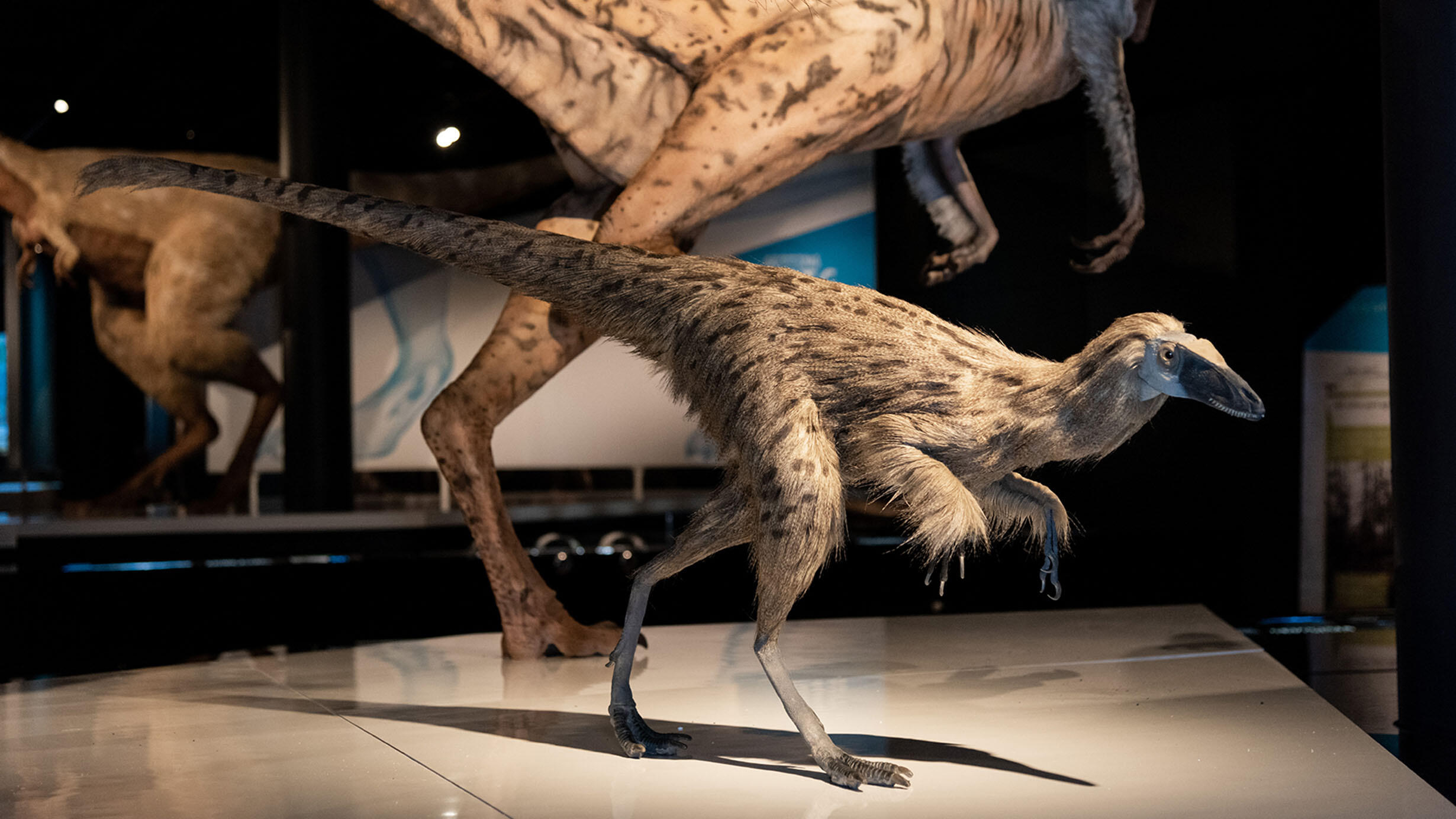 Studying the traits of tyrannosaur species like Dilong paradoxus may provide clues about what juvenile T. rex was like.
Studying the traits of tyrannosaur species like Dilong paradoxus may provide clues about what juvenile T. rex was like.D. Finnin/© AMNH
T. rex didn’t hatch as a 40-foot, nearly 15,000-pound giant. It had to survive a childhood and adolescence without its fully formed, bone-crushing skull and jaws—and find its food where it could.
With different bodies and teeth, hatchlings and juveniles would have occupied different niches in their ecosystem along the way, with their diets changing as they grew, much like animals do today.
Mark Norell, Macaulay Curator of Paleontology and curator of T. rex: The Ultimate Predator, points to the world’s biggest lizard, the Komodo dragon, as an example of the various ways a single species functions in its environment over its lifetime.
Amy the Nurse/Flickr
“Juvenile Komodo dragons live in trees, and when they get to about one third of their adult size, they start living on the ground. Each of those different zones have different diets,” Norell says. “After they hatch, they feed primarily on insects and small reptiles, and when they’re teenagers, they become active predators, eating small mammals. When they’re adults, they feed on giant pigs.”
Juvenile fossil specimens are rare, but scientists are piecing together what young T. rex was like by studying other tyrannosaur species. The body, behavior, and diet of a juvenile T. rex likely had a lot in common with its smaller ancestors, such as Dilong paradoxus, which evolved about 40 million years after the first known tyrannosaur, Proceratosaurus.
Illustration by Zhao Chuang; courtesy of PNSO
Like many early tyrannosaurs, the arms of Dilong were relatively long and capable of seizing small prey. It also had thin, bladelike side teeth, unlike the thick teeth of an adult T. rex, indicating a very different diet.
Find out what fossils can tell us about T. rex hunting habits.
“Juvenile T. rex teeth would have been much more like a lot of other carnivorous dinosaurs, little miniature steak knives on the side of the skull, as opposed to big bone-crushers,” says Norell. Insects and small lizards would have been likely prey.
As T. rex grew into its apex predator body form, its teeth and diet changed, too—a trajectory biologists see today when they look at alligators. As small hatchlings, alligators' bladelike teeth are good for snacking on insects and small fishes. Then they mature into turtle shell-crunching machines with acorn-shaped back teeth.
And eventually, if T. rex managed to survive to adolescence, it underwent a dramatic and rapid transformation into the mega-predator we know today.
Find out more about T. rex and the tyrannosaur family in T. rex: The Ultimate Predator.
A version of this story first appeared in the Spring issue of the Member Magazine, Rotunda.